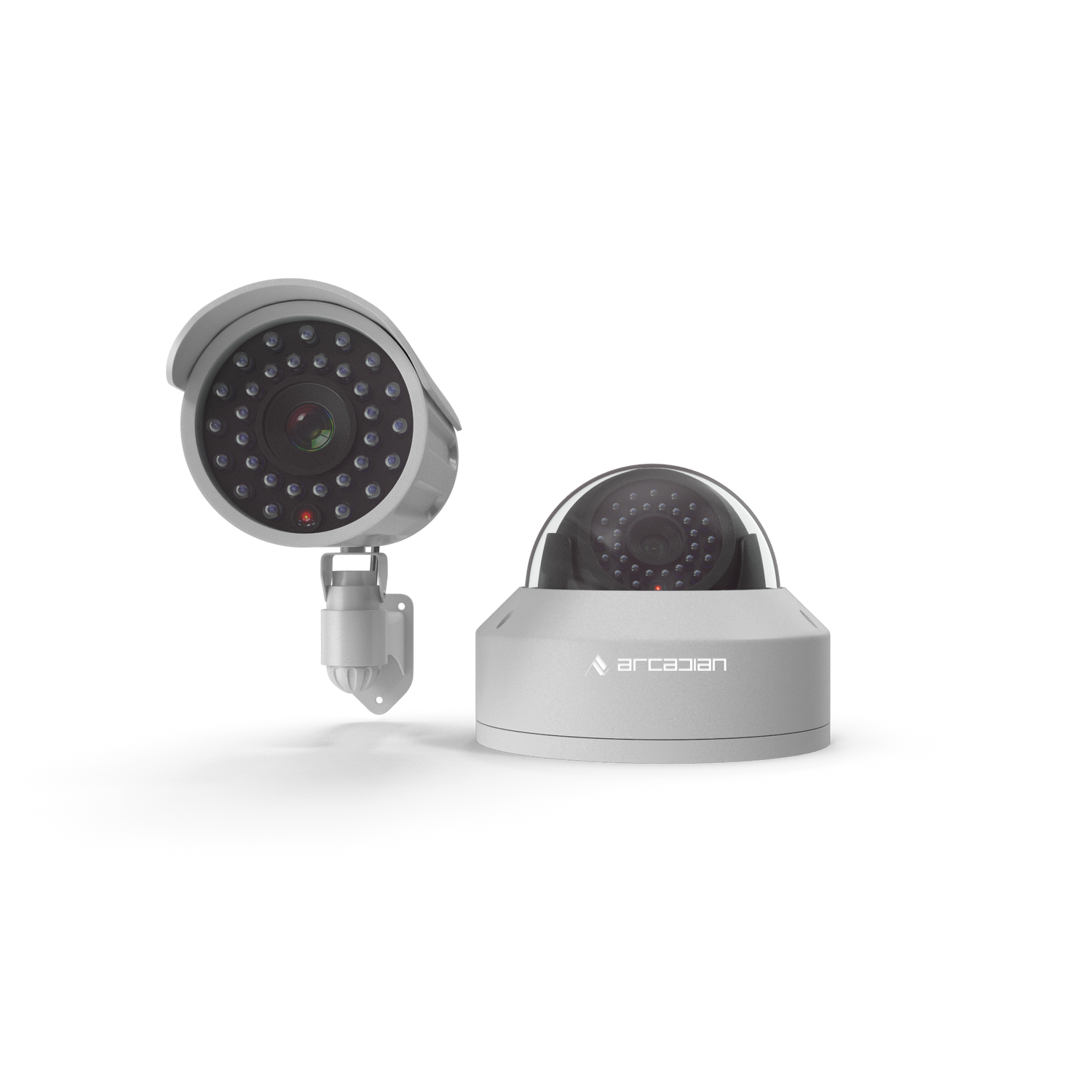It’s Always Sunny in Their Demos: Why Static Surveillance Systems Fail in Real-World Conditions — and How Ranger Adapts
They promised year-round protection. But when the fog rolled in, the AI took a nap. Discover why seasonal intelligence isn’t optional—and how Ranger redefines what “smart” actually means.

- Introduction
- Quick Summary / Key Takeaways
- Background & Relevance
- Static Systems in a Dynamic World
- VSaaS Systems: Cloudy with a 100% Chance of Delusion
- VMS Platforms: Big, Bulky, and Blind in the Rain
- NVR Systems: Still Pretending It's 2005
- The Myth of “All-Season Surveillance”
- Seasonal Intelligence Is Not a Feature—It’s a Mindset
- Why Ranger Is Different
- Conclusion & CTA
Introduction
What do Verkada, Milestone, Genetec, and Eagle Eye Networks all have in common?
They sell security like it's a PowerPoint slide: always sunny, perfectly lit, nothing unexpected. Their surveillance platforms—be it a "smart" VMS or a slick VSaaS dashboard—promise year-round visibility, AI-based alerts, and edge intelligence.
But here’s the inconvenient truth:
Surveillance doesn't happen in perfect weather. It happens during snowstorms, heat waves, torrential downpours, foggy mornings, and pitch-black nights.
And most systems? They’re blind, confused, and dangerously static.
At ArcadianAI, we’ve studied the competition. Not their websites—their actual performance in real-world, seasonally dynamic conditions. And what we found? Is equal parts hilarious and terrifying.
This blog isn’t just a comparison. It’s a wake-up call for every business still buying into the myth of weather-agnostic surveillance.
Spoiler alert: Ranger isn’t static. It’s adaptive. And that changes everything.
Quick Summary / Key Takeaways
-
Most NVR, VMS, and VSaaS platforms ignore environmental context—leading to false alarms or missed threats.
-
Competitors like Verkada, Genetec, Milestone, and Eagle Eye promise AI, but operate with rigid, static logic.
-
Real-world conditions vary dramatically across seasons—and traditional systems break under pressure.
-
ArcadianAI’s Ranger is built to adapt, think, and respond like a security expert. That’s how it outperforms legacy stacks.
Background & Relevance
Why is this topic important? Because surveillance is environmental. And the industry pretends it's not.
$112 Billion in Retail Theft (and Growing)
According to the National Retail Federation, U.S. retailers lost over $112 billion in shrink in 2022. A massive portion of that was due to:
-
Blind spots during weather events
-
Underperforming analytics at night or in rain
-
False alarms ignored after months of irrelevant alerts
Now imagine if your entire security stack:
-
Was tuned during sunny California afternoons.
-
Couldn’t differentiate fog from a fire.
-
Thought headlights were intrusions.
Sound familiar?
Because that’s how most legacy systems behave. They don't understand context. And they don't learn.
Static Systems in a Dynamic World
Let’s break it down by platform category—and call out the culprits by name.
VSaaS Systems: Cloudy with a 100% Chance of Delusion
Verkada: Sunshine Surveillance for the Boardroom
What they promise:
AI-powered cloud security with plug-and-play simplicity.
What they deliver:
Beautiful dashboards that panic during snow.
Verkada cameras are sleek, their pitch is tighter than a TED talk, and their onboarding? Smooth. But ask any enterprise user what happens during a Midwest blizzard or summer downpour, and you’ll hear the same thing:
Alerts. All. Day. Long.
-
No scene understanding.
-
No weather filters.
-
No environmental logic.
-
And definitely no Ranger.
They optimize for easy installation, not dynamic intelligence. If the light changes, your alert changes. If a branch sways, your phone vibrates.
It’s surveillance that assumes Earth is in climate control.
Eagle Eye Networks: Cloud-First, Context-Last
What they promise:
Flexible cloud VMS for multi-site scalability.
What they deliver:
A powerful backend—without seasonal logic on the frontend.
Their system is scalable. Their integrations are real. But when it comes to interpreting scenes intelligently, Eagle Eye relies heavily on third-party AI and limited event rules.
Translation? You can store your cloudy footage. You just won’t understand it.
During nightfall, fog, or flashing headlights, the system doesn’t adapt. It stores confusion at scale. Nothing more.
VMS Platforms: Big, Bulky, and Blind in the Rain
Milestone XProtect: Built for the Past, Blind to the Weather
What they promise:
Enterprise-grade, flexible VMS with rich integrations.
What they deliver:
A massive rule engine—if you have a dedicated IT team and six months.
Milestone is powerful. But that power is rooted in manual configuration, fixed rules, and pre-trained scenarios.
-
Rain? Needs a manual filter.
-
Fog? Good luck.
-
Flashlight vs. headlight? Still a guessing game.
Milestone expects the environment to stay constant—or your team to reprogram it weekly. Either way, you lose.
Genetec Security Center: The Smartest Dumb System in the Room
What they promise:
Unified security management with AI and advanced automation.
What they deliver:
An expensive lesson in overengineering.
Genetec’s system can do everything—except understand that a thunderstorm isn't a threat.
If you don’t configure weather-specific behaviors, expect:
-
Endless alarms triggered by fog.
-
Missed threats during snow cover.
-
Analytics confusion in overexposure or darkness.
Their “AI” is actually a library of presets—not true intelligence.
And when it breaks? You’ll need a certified integrator and three conference calls to figure out why.
NVR Systems: Still Pretending It's 2005
NVRs are the most guilty of “set it and forget it” surveillance.
Hikvision, Dahua, Uniview, Lorex
All four provide variations of:
-
IR Night Vision
-
“Smart” motion detection
-
Event triggers
But what they don’t provide is:
-
Seasonal calibration
-
Weather-aware analytics
-
Scene-level intelligence
They simply record what happens—they don’t understand what’s happening.
If a wet leaf lands on the lens? False alert.
If snow covers the image? Nothing happens.
If shadows dance at dusk? Prepare for dozens of pings.
It’s surveillance as a sensor. Not a system.
The Myth of “All-Season Surveillance”
Let’s mock this idea directly.
“Our system works in any condition.”
— Almost every security vendor brochure ever
Sure it does—in theory. But here’s what they don’t test:
| Weather Condition | Legacy System Behavior | Ranger AI Behavior |
|---|---|---|
| Fog | Triggers motion, then ignores real threat | Filters fog layer, flags unusual shapes |
| Snow | Alerts on reflections and flakes | Ignores snow noise, focuses on movement |
| Rain | Activates false alerts on each drop | Recognizes rainfall pattern and adapts |
| Low Light | Night vision on, quality drops | Uses contextual AI to enhance detection |
| Blinding Sunlight | Overexposure blinds system | Adjusts analysis using scene intelligence |
| Autumn Leaves | Alerts on falling foliage | Knows what a person looks like vs. a leaf |
Seasonal Intelligence Is Not a Feature—It’s a Mindset
The biggest flaw in legacy systems isn’t just their tech—it’s their philosophy. They treat environments like static backgrounds, not active components of the surveillance scene.
But a snowy street corner at 5 PM in January is not the same as a sunlit storefront in July. Security professionals know this. Cameras, NVRs, and VMS platforms? Most of them don’t.
Ranger’s advantage isn’t just AI. It’s the refusal to see the world in static terms. It’s built on the belief that understanding the environment is just as important as identifying the object.
This mindset drives everything we do at ArcadianAI:
-
We don’t just label events. We interpret scenes.
-
We don’t just detect. We contextualize.
-
We don’t just watch. We understand.
That’s why our customers don’t just get alerts—they get insight. And that’s how they act faster, smarter, and with more confidence.
ArcadianAI isn't just a tech company. It's a weather-savvy, thief-anticipating, false-alarm-killing, environment-aware security revolution.
Why Ranger Is Different
Ranger isn’t just another “AI-powered” checkbox. It’s a new category entirely.
Scene-Aware AI, Not Presets
Other platforms use pre-coded rules. Ranger uses computer vision and scene semantics to interpret context in real time.
Weather-Adaptive Logic
Ranger doesn’t “ignore” the weather. It studies it.
-
Fog, glare, snow, rain — each influences Ranger’s alert threshold.
-
Every camera’s output is contextualized, not generalized.
-
Ranger evolves as the scene does. Just like a human guard.
Camera-Agnostic, Cloud-Native
Unlike closed VSaaS vendors (Verkada, Rhombus), ArcadianAI works with:
-
Any camera (Axis, Hanwha, Hikvision, Avigilon, FLIR, etc.)
-
Any location
-
Minimal bandwidth
-
Real-time alerts
No vendor lock-in. Just smarter surveillance.
Conclusion & CTA
Security doesn’t fail when it’s sunny and calm. It fails in the moments no one planned for.
That’s why static systems—from legacy NVRs to bloated VMSs to polished VSaaS dashboards—fall short. They assume conditions they can’t control. They ignore context. And they overwhelm operators with noise.
ArcadianAI’s Ranger flips the script.
-
Adaptive.
-
Context-aware.
-
Seasonally intelligent.
Because the real threat isn’t weather. It’s pretending weather doesn’t matter.
Ready to see what adaptive surveillance looks like?
👉 Get a demo of ArcadianAI and Ranger
Internal Links:
External Links:
-
National Retail Federation: https://nrf.com
-
MarketsandMarkets Report: https://www.marketsandmarkets.com/Market-Reports/video-analytics-market-778.html

Security is like insurance—until you need it, you don’t think about it.
But when something goes wrong? Break-ins, theft, liability claims—suddenly, it’s all you think about.
ArcadianAI upgrades your security to the AI era—no new hardware, no sky-high costs, just smart protection that works.
→ Stop security incidents before they happen
→ Cut security costs without cutting corners
→ Run your business without the worry
Because the best security isn’t reactive—it’s proactive.







